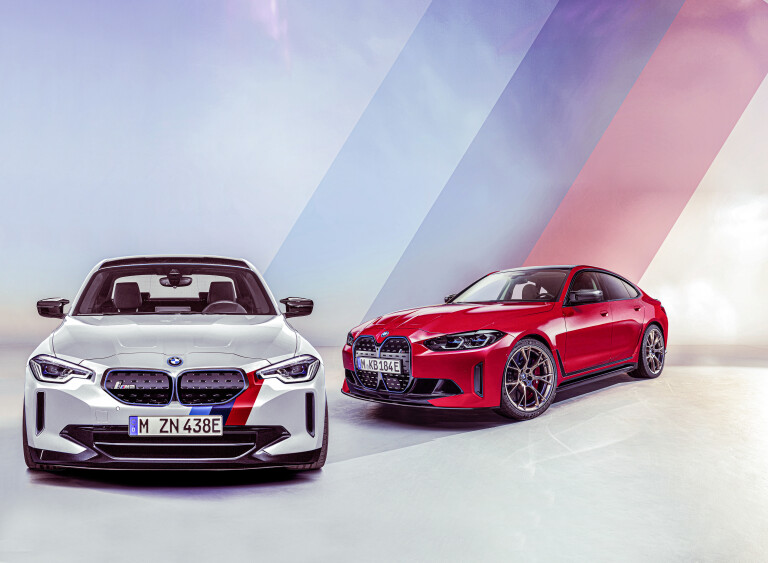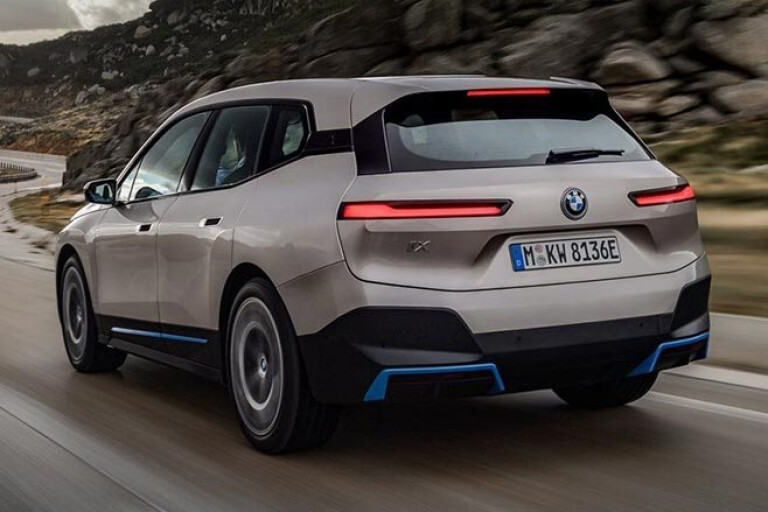
There is one more generation of combustion engines under way, but BMW's clear emphasis is on highly efficient and fully-digitalised electric vehicles (EVs), according to a company exec.
Asked to name a sell-by date for combustion engines, Frank Weber, BMW board member in charge of engineering, answers like a shot: "Wrong question! Before we can discuss an exit scenario, the alternative energy chain must be fully functioning.
"By that I mean the charging infrastructure, green electricity and globally-sustainable raw materials. Right now, we're still in the midst of the transition phase. That's why BMW will this year launch a new engine generation in the 7 Series replacement.
"After all, it is our goal to offer a wide choice of modern, clean and efficient drivetrain technologies. But the prime focus of the R&D team is of course on state-of-the-art EV applications, which will one day replace the petrol and diesel engines."
Boasting plenty of innovations such as pre-heated catalysts and a pre-chamber ignition system, these internal-combustion engines (ICE) meet the stringent Euro 7 emission norm due to be implemented in 2025. What Weber did not mention was the strategic need to keep a bunch of different irons in the fire to meet the world market's increasingly in-homogenous requirements.
One moment the CTO is talking about the next 7 Series and the i7, which he describes as the only true emission-free luxury saloon, while a mere blink of an eye later Frank Weber is ready to take a deep dive into the future – where he must face challenges like edge computing, disruption screening, Deeptech, circular economy, on-demand assembly, you name it.
After all, the character of the motor car is rapidly changing from a personal transportation appliance to a multi-functional tool in the user's progressively more digital, fully-connected world.
In this time-warp process, classic values like performance and driving pleasure are complemented (or even sidelined) by an emphasis on social acceptance and breakthrough IT-based features – the catchphrase 'mobility as a service' comes to mind.

At the Consumer Electronics Show in Las Vegas, BMW enhanced the ongoing development of its personalised 24/7 mobility concept with an on-demand change of body colour at the push of a button, a second-row theatre screen which unfolds from the ceiling, and an exclusive lounge ambience as a foretaste to autonomous driving.
"The digital revolution calls for extended know-how and the ability to synchronise the fast pace of the IT sector with the processes of the car industry," says Weber.
BMW intends to rethink the car, but not to reinvent it – evolution instead of revolution is the name of the game. The key common denominator for present and future is the highly-flexible production network which will undergo major adjustments to qualify for the electric era.
The first factory designed to cater exclusively for the new needs will take up operation in Debrecen, Hungary, in 2024. Home of the New Class, this high-output facility is to assemble the next X3 codenamed NA0 and the 3 Series replacement, dubbed NA5.
Since EVs have, as a rule, a lower parts count – and need fewer work cycles which require less floor space, BMW believes they will eventually be cheaper to build than the notably more complex current breed.
But how can one single DNA – new New Class – cover the entire model range from the humble 1 Series to the heavyweight X7? "Clever packaging is key," knows the man in charge.
"From the start, it is essential to ensure maximum space for the batteries. We developed a scalable set of modules housing different types of cells from range-oriented to performance-focused. Done right, this gene pool fits the entire line-up including the sporty M models."

The New Class takes an even more radical route than the derivative i4 and the commendably advanced iX, which shows what can be done when the engineers start with a clean sheet of paper.
But it's not just the architecture which defines the performance of a new EV. Other important innovation drivers, allegedly unique to BMW, are; a pioneering solid state battery, a patented fully integrated inverter, bespoke performance electronics and a bunch of SSM e-motors designed and built in-house.
Frank Weber knows the details: "Advantages of our current-excited synchronous machines include; high performance density, a very strong and stable peak performance, high repeatability, low noise emission and an excellent efficiency quotient of 97 per cent."
So why does the competition still favour the supposedly inferior ASM and PSM principles? "Because right now, only BMW has come to grips with the challenging manufacturing technology."
The winding road to electrification, digitalisation and autonomous driving never seems to stop draining resources, which in turn forces the industry to economise wherever possible.
BMW, too, must reduce proliferation and complexity, cut or bundle options, scale back the drivetrain variety, discontinue niche models, alter the mix by boosting higher-margin products and open up new digital business areas.
While the demand for coupés and convertibles continues to slacken, SUVs and crossovers remain a licence to print money – which is why all X models from iX1 to iX7, including coupés and M derivatives, will be electrified in relatively rapid succession.
At the same time, the Munich grapevine tells us that the 4 Series and 8 Series are going to merge as reimagined 6 Series in 2026. The only likely survivor is the 8 Series Gran Coupé, which becomes part of the future 7 Series family, sources say.

What's still missing is a fresh halo car along the lines of icons like M1, Z1, Z8 or i8.
"Wrong," quips Frank Weber. "We have no trouble at all picturing a highly-emotional model based on the New Class matrix." The rumour mill has indeed pedalled for some time a new 1MW (that's 1000kW or 1360bhp in old money) supercar, which may emerge as the ultimate M4 successor.
At the International Motor Show in Germany, BMW displayed the i Vision Circular concept, a fully-recyclable Mini-size hatchback heralded by some as the future i3.
Not true – a new megacity vehicle is currently nowhere in sight. But this should not stop us from pointing out the show car's three main messages: the full-circle CO2-neutral material cycle from cradle to grave, the pending demise of the controversial upright rodent fangs grille in favour of a butterfly kidney, and the new brand strategy, which is set to shape future products more from the inside out.
Tomorrow's cockpit should, in other words, become a reduced-to-the-max quiet zone, the days of the ceaseless digital distraction attacks are hopefully numbered, and the car's new mission as personalised cocoon is paving the way for relaxed hands-off motoring.
As far as the BMW radiator theme goes, we expect wider trapezoid shapes, a broader range of proportions, as well as more adventurous surfaces and colour-coding. After the X2, the XM is only the second purveyor of the new family face, but its extreme front-end graphics will thankfully not be repeated by the mainstream 5 Series replacement.

Although the automobile is getting more complex by the day, the product as such has no longer the undivided attention of the CTO, who can in his sleep bend metal, tune a chassis and make drivetrains deliver.
What keeps Frank Weber on his toes instead is the bigger picture, the multiple grey zones which need exploring, the ever-changing legislation hurdles, the diverging customer preferences, the mushrooming digital must-haves and the need to be fully competitive in areas which did not even exist last time we looked.
For one brief moment, the CTO lets us catch a glimpse of his to-do list: "In terms of infotainment, we must bring the advanced IT content Chinese customers are taking for granted to Europe ASAP. In terms of connectivity, BMW must lose no time catching up with the very best.
"We must also respond quickly to new players even outside this industry, speed up the integration of apps, and swiftly create new digital business models. At the same time, it is imperative to boost the computing power, warrant maximum IT security and offer extended functions at cost through over-the-air updates."
According to Herr Weber, a BMW typically has four lives. When the warranty expires after three years, all essential functionalities should still be intact. The next three-year period is much more critical, not necessarily due to extended wear and tear, but because the technology advances with rapid strides.
BMW intends to close this ability gap by offering attractive bespoke over-the-air (OTA) improvements. Cars that are six years old or older tend to suffer from increasingly obvious hardware deficits like the missed step from LED to matrix headlights, the arrival of new assistance systems which cannot be retrofitted, or enhanced in-car entertainment items like full-width cinema displays.
When the battery, which typically carries an eight-year warranty, needs replacing, two out of three EVs have reached the end of the road. Since a new power bank is a major investment, most gutless high-mileage specimens with an obvious TLC deficit head straight for the recycling yard.
The New Class arrives too early to answer the crucial cell-to-package or cell-to-chassis question. Whereas Nio-style battery swapping is not an option, the type of integration remains a controversial hot topic.

Mid-term, BMW is allegedly favouring a closed-circuit concept, which packs the cells, the cooling system and the related crash protection elements into one strong central underfloor module.
Short-term, however, the focus is on evolutions of the scalable multi-level skateboard platform, which can accommodate special features like; a rear foot garage (a cutout in the floorpan designed to keep the H-point low), a beefier double-decker battery tray for SUVs and crossovers, and a dynamic master control unit, which selectively distributes the torque to all four-wheels.
According to those in the know, the most extreme New Class BMW has a motor at each corner and can be fully charged in under five minutes. Looks like the comeback of the 'ultimate driving machine' is almost a done deal.

COMMENTS